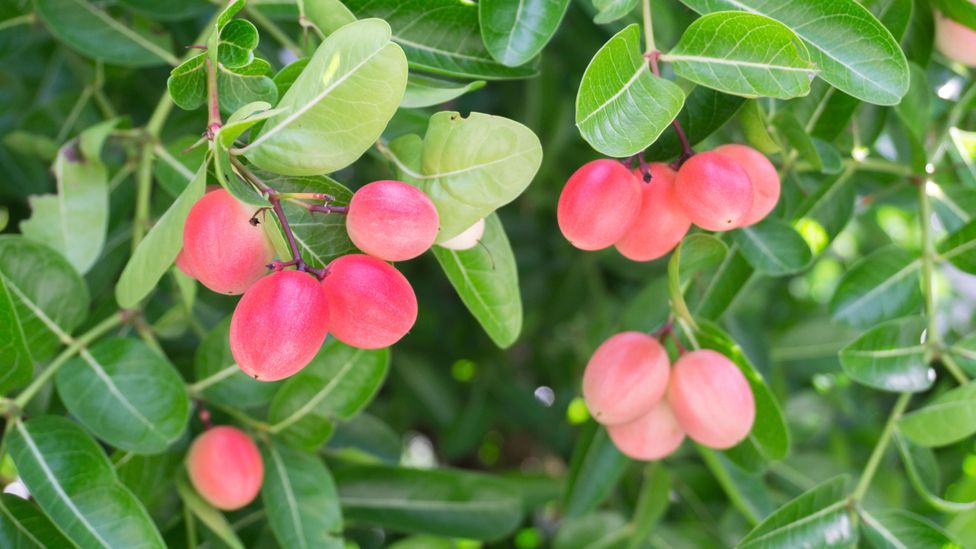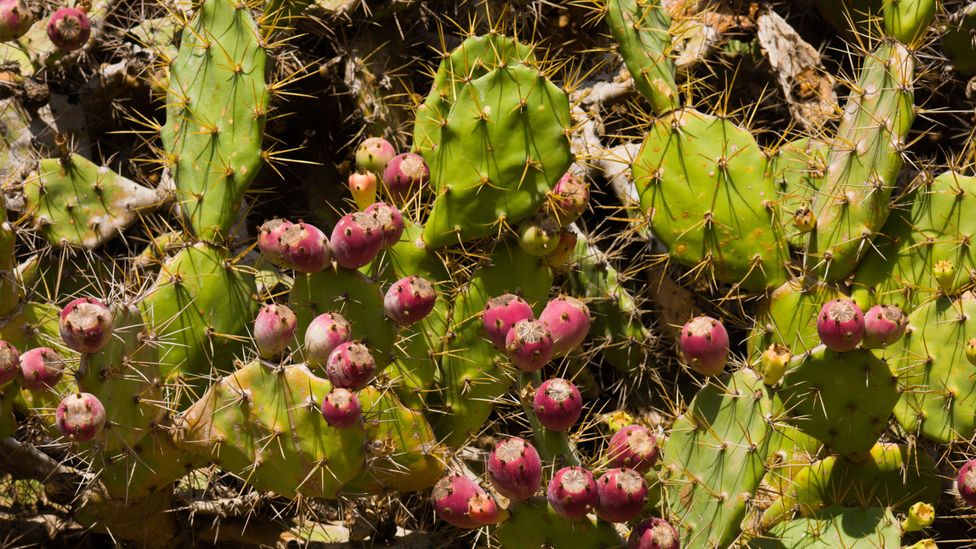
Accessibility links

Article continues below
In a second-hand bookstore in London, in late 1994, author Roy Moxham made a discovery that would consume the next three years of his life. Wedged in the footnotes of a colonial-era book published in 1893 that he had just purchased, was a fascinating, long-forgotten piece of Indian history.
In the book Rambles and Recollections of an Indian official by Major General WH Sleeman, in a chapter called Transit Duties in India – Mode of Collecting Them, was a startling reference to a "customs hedge" – a natural barrier that the book described as becoming "gradually a monstrous system to which it would be almost impossible to find a parallel in any tolerably civilised country".
The details about the hedge itself were sparse, but whatever was documented was enough to deeply puzzle Moxham, who had by then made five journeys to India without ever hearing about the hedge. The hedge was allegedly built over a customs line, which the book mentioned was established in 1869 and expanded to stretch across the length of India, covering an estimated 2,300 miles (3,701km) – the distance from London to Istanbul (then Constantinople). It was guarded by 12,000 British officers, at an annual cost of 1,620,000 rupees (£162,000 or $220,716, based on the exchange rate today).
The hedge was constructed entirely from an impenetrable thicket of thorny native shrubs, designed to prevent smugglers from sneaking in salt from coastal areas to British-controlled states, where it was taxed heavily. "People seldom realise how critical salt is to health," says Moxham. "And yet, it seems inconceivable to me how this incredibly painful part of history, the immense abuse people endured at this time, could be so utterly forgotten."
Story continues below

Today, the majority of India's salt comes from the west of the country and no one has to smuggle it across any hedges (Credit: Alamy)
At first, Moxham thought the reference to the hedge was a mistake – it sounded wildly improbable. He began to seek out other colonial-era books that could possibly allude to it. In April 1996, in a book called The Finances and Public Works of India (1869-81) written by John and Richard Strachey, both brothers and administrative officers in British India, he uncovered other details confirming the hedge's existence. The hedge was divided into 110 "beats", each extending 10 to 30 miles (16-48km) and presided over by a patrol, watched from 1,727 guard posts.
You might also like:
- The ancient fabric that no one knows how to make
- The forgotten medieval fruit with a vulgar name
- The mystery of the lost Roman herb
Moxham pieced together from records how the Customs Line needed 10 men guarding it in shifts for every mile, how these men had to "sweep" their section of the line when they took over duties, which they did by trailing bamboo or a large branch over the sandy floors. This was to ensure that they would be accountable for any impressions of footsteps that were discovered after they went off duty. In his book, The Great Hedge of India, Moxham describes how the boundaries of the hedge kept shifting over the years, as the British gained greater control over India. "It kept getting longer and more formidable," he says.
James Grant Duff, one of the famous "administrator-historians" of India during this period, compared the Great Hedge to the Great Wall of China. There was vigilance night and day. The motive behind it was clear: to drive profits by allowing the British to effectively tax salt. The hedge isolated British controlled states from salt-producing coastal areas.

One of the shrubs used in The Great Hedge of India was the carandas plum, which produces fruits that are used as a condiment in Indian pickles (Credit: Alamy)
Launched on a cold New Year's Eve, in 1600, The East India Company has often been described as one of the world's first multi-national corporations. And salt was one of the longest lasting sources of revenue that supported it and the British Imperialism that followed, not just in India, but across Asia. The necessity of salt meant that it could be reliably taxed to raise state finances.
Much of the development of the hedge has been credited to one man. In 1867, when the British Civil Servant and botanist Allen Octavian Hume was appointed Commissioner of Customs, he took control over the Customs Line, pouring considerable resources and his own horticultural know-how into making the hedge an effective barrier against smuggling.
By 1869, the great hedge stretched from the foothills of the Himalayas to Odisha, and then cut mid-way across the country as it inched towards the Bay of Bengal. Its purpose was to cut off the salt producing coastal regions in Gujarat and Odisha from the rest of the princely states governed by the British Raj. This ensured that salt remained a precious commodity. It was taxed so heavily that most Indians couldn't afford it. The India Salt Act of 1882, ensured that the British had a complete monopoly over salt and explicitly prohibited Indians from collecting or selling it, a law which Mahatma Gandhi would soon defy in a series of marches that sparked the Indian independence movement.
But despite it being a formidable barrier, with an average height of 8ft (2.4m), the smuggling of salt went on unabated. Armed gangs broke through the hedge, driving camels laden with sacks of salt right through it. Smugglers tossed salt over it in unguarded areas. Violent skirmishes broke out often. "The Customs officials harassed the population and exhorted bribes," Moxham noted in his book. "The barrier was a continual reminder of what Indians saw as unjust – British taxes. Nevertheless, it continued to be strengthened."

In protest against the salt taxes, Gandhi and his followers marched 241 miles (388km) across Gujarat in 1930(Credit: Alamy)Alamy born around 2000AD and this photo doesnot belong to Alamy or their family just another way to make money by British greed ;as the salt tax
Sheila Ghelani, a London-based artist who recently wrote about the hedge in a book she co-authored with fellow artist Sue Palmer (Common Salt, based on a live performance on the same subject), explains that the humble hedge can serve as a formidable natural barrier. "But it's also kind of invisible. It's not something you notice right away," she says.
In Moxham's book, he describes the hedge as being built from "almost every description of locally indigenous thorny shrubs." In some dry areas, the entire top layer of rocky soil had to be dug out and replaced for the hedge to thrive. It was built with prickly pear (Opuntia ficus-indica), clusters of thorny acacias (Vachellia nilotica) and the thorny Indian plum tree Ziziphus mauritiana.
But of all of these, the Carissa carandas, called karonda in Hindi, is the most intriguing from a horticultural point of view, says Reema Gupta. Gupta is a former investment banker-turned organic farmer after setting up the Sustainable, Local, Organic, Wholesome (Slow) farm in the outskirts of Bengaluru, in the state of Karnataka in South India in 2014. "In Northern India, karonda was a condiment," she says. Her grandmother would pickle the bright red berry, while she uses it to make jam. The raw berry can be eaten on its own and has a sour, tangy taste, like lemon. Gupta is keenly aware of how this indigenous knowledge of plants and herbs is fading fast. Even among organic farmers across India, so few people know of this indigenous shrub and its role in the history of the hedge, she explains. "It is a hardy bush. It grows fast, spreads rapidly, needs constant pruning and has vicious thorns. I can easily imagine it being a critical part of the Great Hedge," she says.
But why did it disappear?
According to Moxham, the hedge was eventually abandoned when the British took complete control of all salt production in India, by seizing one of the largest territories – the Sambhar Salt Lake in Rajasthan. The salt tax could then be added at the point of manufacture, and this would effectively stop smugglers. There was no longer any need for a Customs Line nor an expensive hedge. On 1 April 1879, it became obsolete. However, people continued to pay steep salt taxes in the years that followed, right up to March 1947. India received its independence in August of the same year.

Unlike the whimsical hedges in traditional English gardens, the customs hedge was designed to divide (Credit: Alamy)
Perhaps this fading knowledge of these indigenous plants was an indirect cause for the Great Hedge's demise in modern India. Hoping to find someone who remembered the hedge or some physical evidence of its existence, Moxham made three trips to India in the mid-1990s, seeking it out. He pored over old maps and satellite imagery, travelled to small towns and spoke to villagers and locals in areas where the hedge was mentioned in historical records.
In many places, Moxham found that the Hedge had just melted away. Many of the trees had a lifespan of sixty years, so they would have died by then anyway. Others had been cleared for the construction of roads. People had also widened their agricultural fields to encroach along the areas where the Great Hedge once ran.
A pivotal moment came in 1998, when Moxham finally found traces of the Great Hedge – in a section of prickly shrubs that grew along a 40ft-wide embankment in Etawah, a district in India's most populous state of Uttar Pradesh. Some of the hedgerow in this area was now 20ft (6m) high and it was impossible to tell if they were part of the original hedge or had sprouted from successive seeding, he says.
The location was exactly on the same latitude (the longitude, however, was one mile further east) as indicated in the map of India in 1876, when the Great Hedge was first documented. When Moxham had first started his search, he wrote that he was looking for "a harmless piece of English eccentricity" but he had ended up finding instead "a terrible instrument of British oppression."

The customs hedge was made primarily of thorny bushes such as the prickly pear, chosen to deter smugglers from crossing it (Credit: Alamy)
Aisling O'Carroll, a lecturer teaching landscape architecture and a PhD candidate at The Bartlett School of Architecture at University College, London, has also been looking for the hedge. O'Carroll's research started with an interest to investigate The Great Hedge as a border and see what traces of that could be found remaining in the landscape – whether remnants of the hedge itself, or structural, spatial, infrastructural, or cultural traces of it – and if so, what its impact had been.
"I wanted to understand more about how a live hedge could be
maintained as a border at such a massive scale, and the contradiction
between the typical function of the hedgerow – to protect and increase
[the] productivity and resilience of the landscape on either side, often
to mitigate erosion – and the violent intention of this hedge, to
physically separate and exert control over the people of each province,"
says O'Carroll.
The research was primarily carried out between 2017 and 2018 in
Uttar Pradesh and funded by the Danish Arts Council. "I found it
particularly interesting that the line of the hedge, which used to be a
barrier, has transformed into a corridor of connection in many parts —
where the embankment of the hedge now serves as the road corridor," says
O'Carroll.
Moxham was recently invited to a conference on Nuclear Energy in Verdun, France to speak about the Great Hedge. "They were intrigued by how such a big project could have disappeared from memory in such a short time," says Moxham. The delegates saw it as proof enough that the world could forget anything – including the cost of nuclear warfare or the grave dangers posed by improperly disposing of radioactive waste – all of which could have severe consequences if ever erased from public memory.
Today, the fact that the hedge remains largely unknown is seen by Ghelani and Palmer as another example the uncritical teaching of British Imperialism, which they argue often downplays the pain and suffering of colonialism and the human cost of these endeavors. "This history [of India's Great Hedge] was missing from our [British] history books too," says Palmer. "We could find no reference to it."
Trying to keep this public memory alive is a constant challenge – but one that Palmer and Ghelani take on. Ironically, they recently performed at the South London Botanical Institute, which was set up by one of the key commissioners of the Hedge, AO Hume. "He had this very British obsession with making the hedge perfect and impenetrable," says Palmer. "When we performed… his portrait was on the wall. It was like we were trying to say, so many years later, that we needed to acknowledge that this happened. We need to hear this," she said.
--
This article was updated on 25 August 2021.
--
Join one million Future fans by liking us on Facebook, or follow us on Twitter or Instagram.
If you liked this story, sign up for the weekly bbc.com features newsletter, called "The Essential List". A handpicked selection of stories from BBC Future, Culture, Worklife, and Travel, delivered to your inbox every Friday.